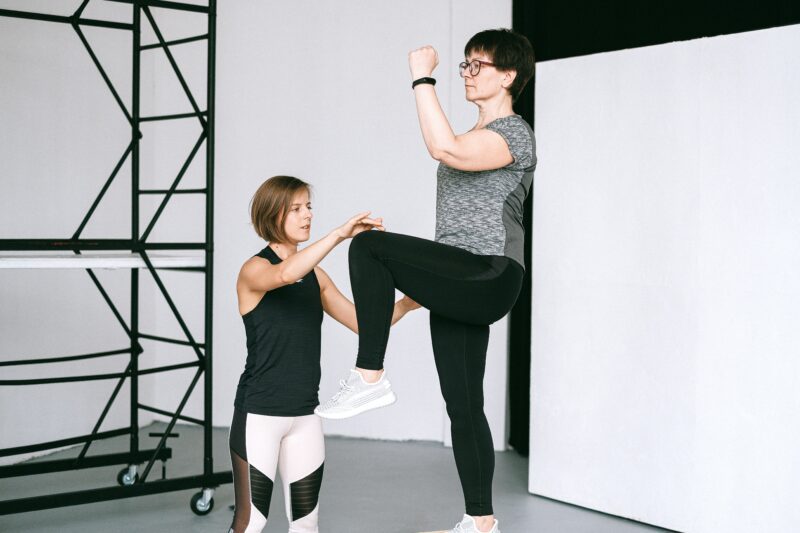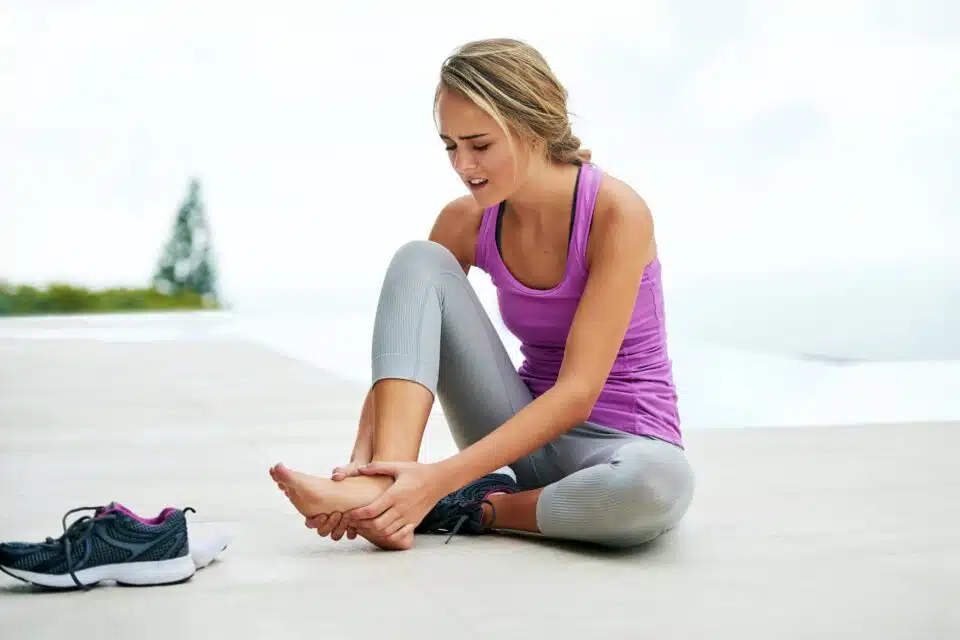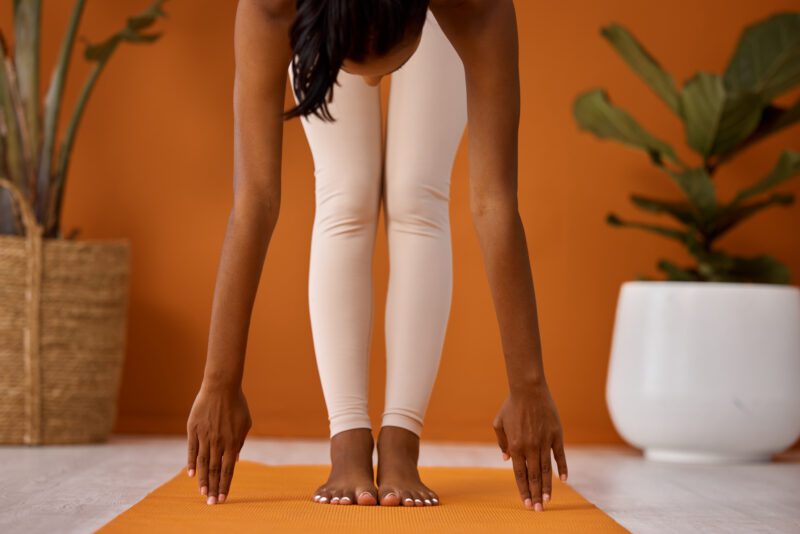Why do foot injuries during exercise occur? The answer to this question is, essentially, several reasons. Everyone can hurt themselves while working out by neglecting proper footwear, forgetting their stretching, overexertion, and more. Since your feet are the foundation of all physical activity, paying attention to foot health and injury prevention are the best ways to continue your fitness routines without interruption. Let’s take a look at how to do that.
Top 10 Tips for Preventing Foot Injuries During Exercise
- Wear proper footwear
- Stretch
- Modify
- Don’t overexert yourself
- Remember your form
- Start slow
- Improve flexibility
- Eat a balanced diet
- Take rest days
- Drink water

Wear Proper Footwear
Exercising while wearing low-quality, unsupportive footwear is a recipe for disaster. One of the best ways to avoid sports-related injuries is wearing the right footwear, which may include:
- Shoes: Your shoes should be well-cushioned, as this will absorb the force of the ground during footstrike. This is especially true for runners or athletes who run while performing, but it is also an important quality for light activity. By acting as a barrier between your foot and the ground, cushioning can prevent injury to the lower limbs. Furthermore, a study from the Journal of Athletic Training notes that good shoes function as the main “interface” between the person and the impact from the ground. Additionally, depending on your pronation type, stability and motion control shoes may help stabilize your movements and prevent ankle injuries.
- Custom orthotics: In the podiatry and chiropody field, specialists often recommend orthotics to those already experiencing an overuse injury, like plantar fasciitis or Achilles tendonitis, to prevent it from worsening. Orthotics also prevent all types of injuries by distributing your weight evenly, aligning and stabilizing your movements, and absorbing shock. To learn about the different orthotic types, you can check out our complete guide.
- Superfeet insoles: These over-the-counter insoles are available at Feet First Clinic and are a more affordable alternative to custom insoles. According to their FAQ page, they may help prevent common foot and lower leg injuries like shin splits, plantar fasciitis, patellofemoral pain, Achilles tendonitis, and IT band syndrome.
Stretch
You should warm up for physical activity by performing stretches and exercises targeting different muscle groups. You should also cool down after a workout by stretching. People stretch because it expands the muscle fibres, making them stronger and more pliable (and thus less prone to injury!).
Prevent foot injuries during exercise by checking out these stretching articles:
Modify
Both athletes and those with mobility issues should understand the importance of modifying fitness routines. When you try a new workout, you may find it too challenging to complete the first time. And if you ignore this and push it, you can easily hurt yourself. It is extra important to modify your routine if you notice pain or discomfort, which is quite different from “feeling the burn” or being tired from exercise. The best thing to do in these scenarios is modify your workout and practice gradual progression, which helps your body adapt to different intensity levels.
You can modify workouts by reducing weights, slowing down, sitting down instead of standing, reducing impact levels, and resting for longer periods. There are also easier versions of several exercises, like modified push-ups or modified planks.
Don’t Overexert Yourself
It’s always amazing to see what our bodies are capable of, but there is a clear difference between a successful workout and overexertion. When you put too much pressure on your feet, you can easily experience a stress fracture, which is a tiny crack(s) in the foot’s bones, as a result of increasing activity levels too quickly or working out for too long without a break. Overexertion can also lead to ankle sprains and common overuse injuries.
Remember Your Form
Proper form keeps you from putting physical stress on the wrong muscle groups. Likewise, it helps you activate the appropriate muscles and prevents overuse injuries. For example, if you perform a squat but neglect proper form, you can put too much stress on your feet without engaging the glutes and hamstrings (the target muscles). Good form also aligns your body correctly, which consistently protects your joints.

Start Slow
This goes without saying, but if you’ve never exercised consistently before, you don’t want to start with intense routines or complicated sports you don’t fully understand. Not only does “starting big” pose a high injury risk, but if you don’t do as well as you’d hoped, it can hurt your confidence and stop you from exercising in the future. Instead, start your new healthy lifestyle with beginner-level workouts at the gym, home, or outside.
Improve Flexibility
When you focus on flexibility, your range of motion will improve over time, lessening your risk of sustaining a foot injury. Flexibility can also promote good posture, which helps you maintain proper form and align your lower body, thereby reducing the stress on your feet. Flexibility can also boost blood circulation because flexible muscles are better at receiving oxygen and other nutrients. This helps you heal from mild aches and pains and prevents future injury.
Prevent foot injuries during exercise by working on flexibility:
Eat a Balanced Diet
Eating a nutrient-rich diet and avoiding overeating will help you maintain a healthy weight. Unfortunately, excess weight puts too much pressure on your feet and lower legs, making your body’s foundation much less sturdy than it should be. Unhealthy foods can also cause inflammation, leading to muscle soreness and joint pain, which can flare up during exercise, distract you, and cause an injury. Furthermore, overeating sugar and processed foods can make you suddenly feel lethargic during an activity. This can make you lose focus and sustain an injury.

Take Rest Days
Resting for a day or two during the week can reduce inflammation and muscle fatigue in time for your next workout, but the main purpose of rest days is to give your body time to repair and replenish energy stores. When you ignore this advice and try to exercise every day of the week, you can easily worsen the aches and pains you’re already feeling or simply burn out. This will make you give up on exercise, cause you to lose focus and hurt yourself, or put you at risk of developing an overuse injury.
Drink Water
Dehydration can easily sneak up on us, and you can experience mild dehydration after forgetting to drink enough water for a few days.
Proper hydration helps prevent sudden muscle cramps. These can feel alarming during exercise and cause you to experience a sudden fall. Furthermore, hydration helps to regulate your body temperature, keeping you comfortable and focused during physical activity. Drinking enough water also helps with the elasticity in the foot’s tissues, which may become dry and stiff when you don’t drink water. This reduces your risk of sustaining a stress fracture or developing Achilles tendonitis.













